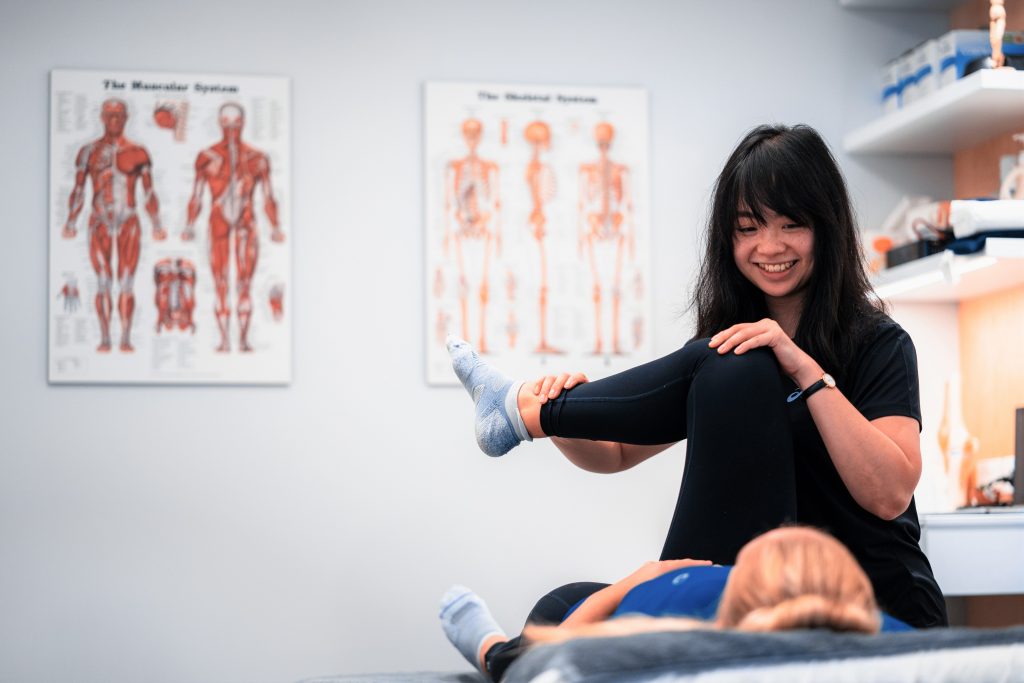[vc_row type=”in_container” full_screen_row_position=”middle” scene_position=”center” text_color=”dark” text_align=”left” overlay_strength=”0.3″ shape_divider_position=”bottom”][vc_column column_padding=”no-extra-padding” column_padding_position=”all” background_color_opacity=”1″ background_hover_color_opacity=”1″ column_link_target=”_self” column_shadow=”none” column_border_radius=”none” width=”1/1″ tablet_width_inherit=”default” tablet_text_alignment=”default” phone_text_alignment=”default” column_border_width=”none” column_border_style=”solid”][vc_column_text]By Physiotherapist, Nate Chan
Have you heard the news?
A recent news article has alluded to the beneficial effects of a simple piece of exercise equipment to revolutionise the recovery of people with total knee replacements. This one tool is the standard stationary exercise pedal. This $29 pedal bike is said to potentially save patients up to $25 million per year in healthcare costs.
However, this article is very misleading. This is due to the fact that it offers a vague, blanket approach to postoperative recovery for knees. You may have heard the saying ‘everyone is unique and different’ repeated time and time again, but in this case, it’s true!
With each person’s recovery from an injury, the overall aim is to achieve movement. Movement is needed to complete daily and sports specific tasks such as walking, climbing stairs, running or cycling. Sports specific tasks involve training and rehabilitating the individual in that particular context or environment. Without such context specific rehabilitation, the risk of re-injury spikes.
By only using a pedal bike during recovery, a person is limiting themselves to one simple, continuous movement. The pedal bike will not help with change of direction (side to side movements), will not improve balance, and neglects the wound, which leads to the build up of scar tissue. This is because it was not part of the rehabilitation process.
The article also fails to see the individual as a REAL person. Sir William Osler (physician) once quoted “the good physician treats the disease; the GREAT physician treats the patient who has the disease”. In other words, we need to focus on not only the injury at hand, but also the injured person, who has individual beliefs, expectations, experiences and history. Everyone is unique, so a rehabilitation program must be tailored specifically to that particular person.
The Verdict
It’s well known that physiotherapy is effective in treating people recovering from knee replacement surgeries. Studies have shown that physiotherapy can delay or even avoid the need for joint replacement surgeries in approximately two-thirds of people suffering from osteoarthritis.
In summary, yes the pedal bike will help the person achieve more range of motion (ability to bend and straighten the knee), and potentially reduce their pain. However, physiotherapy is still essential to get you back to doing what you love, unless your only aim is to sit down and bend your knee.[/vc_column_text][/vc_column][/vc_row][vc_row type=”in_container” full_screen_row_position=”middle” scene_position=”center” text_color=”dark” text_align=”left” overlay_strength=”0.3″ shape_divider_position=”bottom”][vc_column column_padding=”no-extra-padding” column_padding_position=”all” background_color_opacity=”1″ background_hover_color_opacity=”1″ column_link_target=”_self” column_shadow=”none” column_border_radius=”none” width=”1/1″ tablet_width_inherit=”default” tablet_text_alignment=”default” phone_text_alignment=”default” column_border_width=”none” column_border_style=”solid”][nectar_cta btn_style=”see-through” heading_tag=”h6″ link_type=”regular” alignment=”center”][/vc_column][/vc_row]

